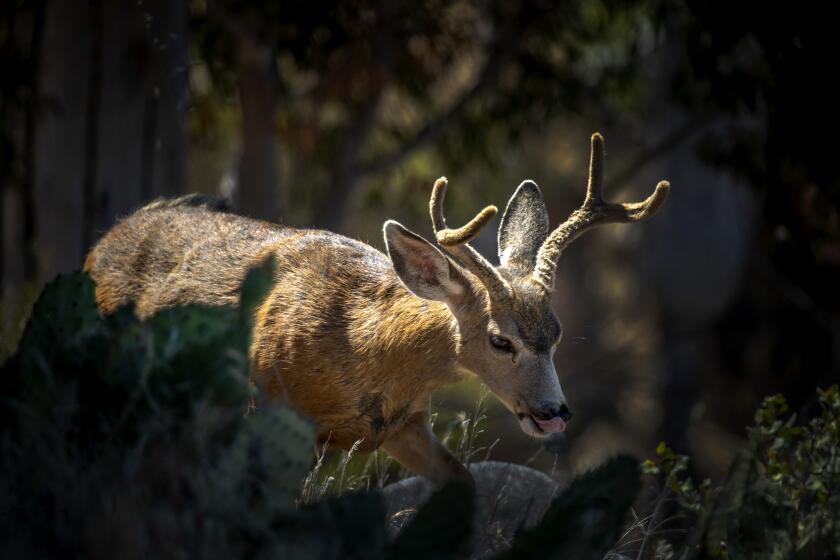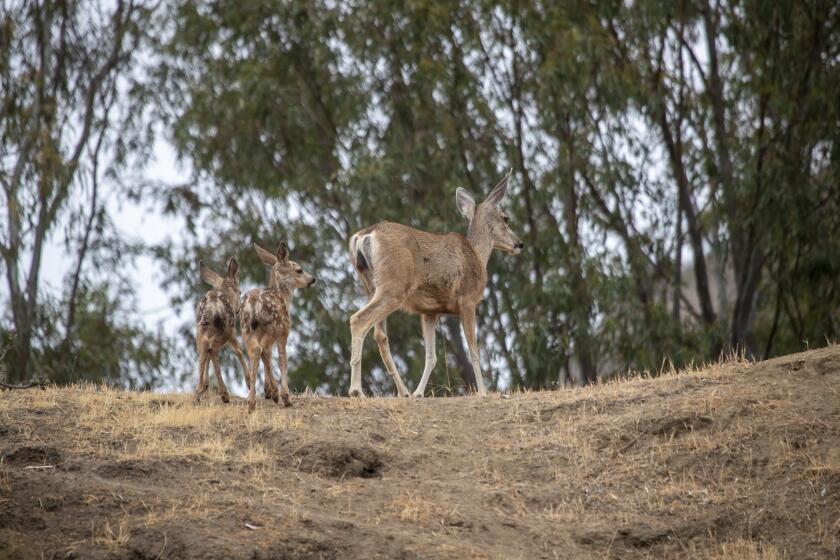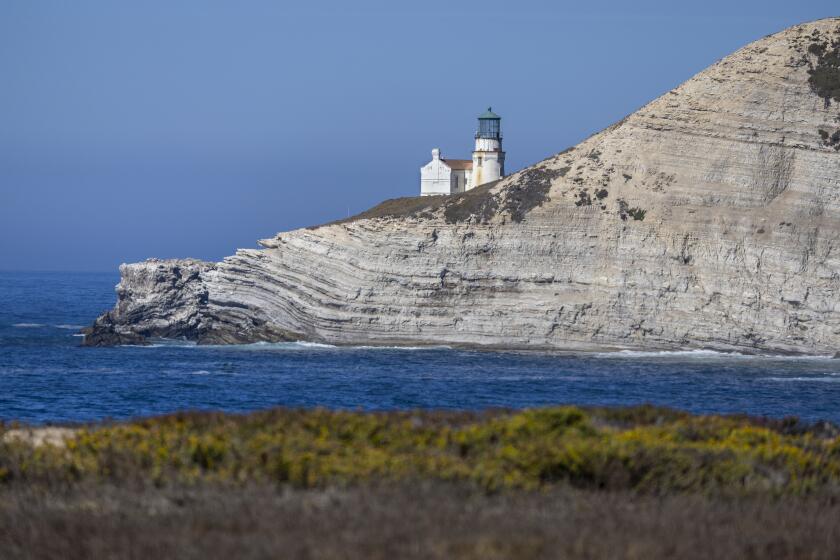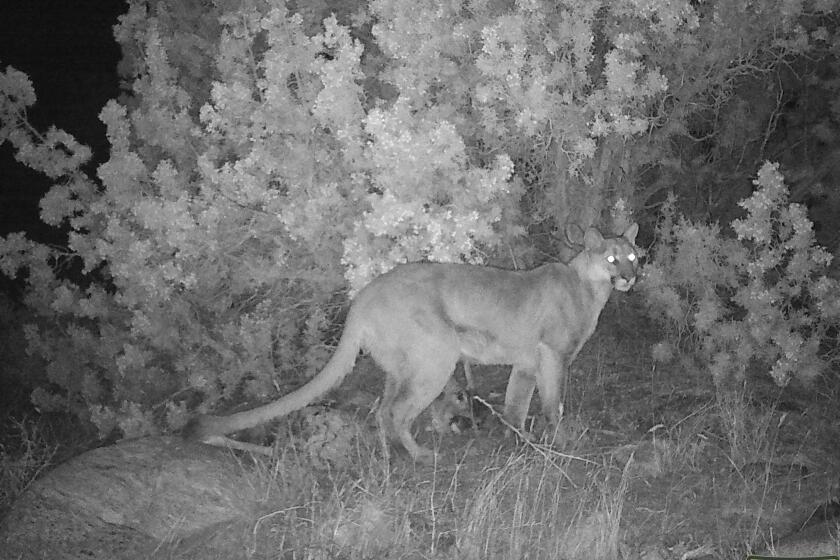
News had barely broken of plans to eradicate thousands of nonnative mule deer on Santa Catalina Island before conservation biologist Lauren Dennhardt found herself the target of enraged Avalon residents.
In acidic emails, paid advertisements and insults uttered on the street, residents branded the plant expert an “eco-extremist” and “the woman who killed Bambi.” On her office phone at the Catalina Island Conservancy, a caller left a message warning, “I have guns and know how to use them.”
Aggressive and impactful reporting on climate change, the environment, health and science.
At one point, the Los Angeles County Sheriff’s Department advised the senior director of conservation to move off the island for a few days and wait for passions to die down.
Now, barely a month later, emotions are still running high in this cozy harbor community of Victorian homes and beachfront cafes.
In protests in front of ferry passengers, and in government meetings, residents continue to blast a habitat restoration plan they say would forever change the character and culture of the island. They say they cannot abide the heartless slaughter of countless lovable deer, just to save some “stupid plants” in the island’s rugged interior.

According to Dennhardt and the conservancy, however, the mule deer is the most destructive invasive animal left on the island. The nonprofit, which manages nine-tenths of the island and is mandated to return it to its natural state, has proposed using sharpshooters in helicopters to eliminate the herd.
“The deer have over browsed the land — destroying natural habitats along with the vegetation that’s needed to help reduce wildfire risk and soil erosion,” the conservancy’s website says. “While the deer are present, ecosystems that should be lush and forested are converted to stripped down landscapes that are vulnerable to the overgrowth of fire prone invasive grasses.”
Invasive mule deer are pushing native plants to the brink on Catalina Island. Officials want to hunt animals from helicopters.
The dispute between residents and conservationists has turned this seaside community on its head.
“There is quite a bit of tension in Avalon,” said Bob Kennedy, a resident and former mayor of the resort town of about 3,400 permanent residents about 22 miles off the Southern California coast.
“I understand the passion on both sides of the issue,” he added. “But you’d think they’d find middle ground where some deer would be left on the island and used as a state resource.”
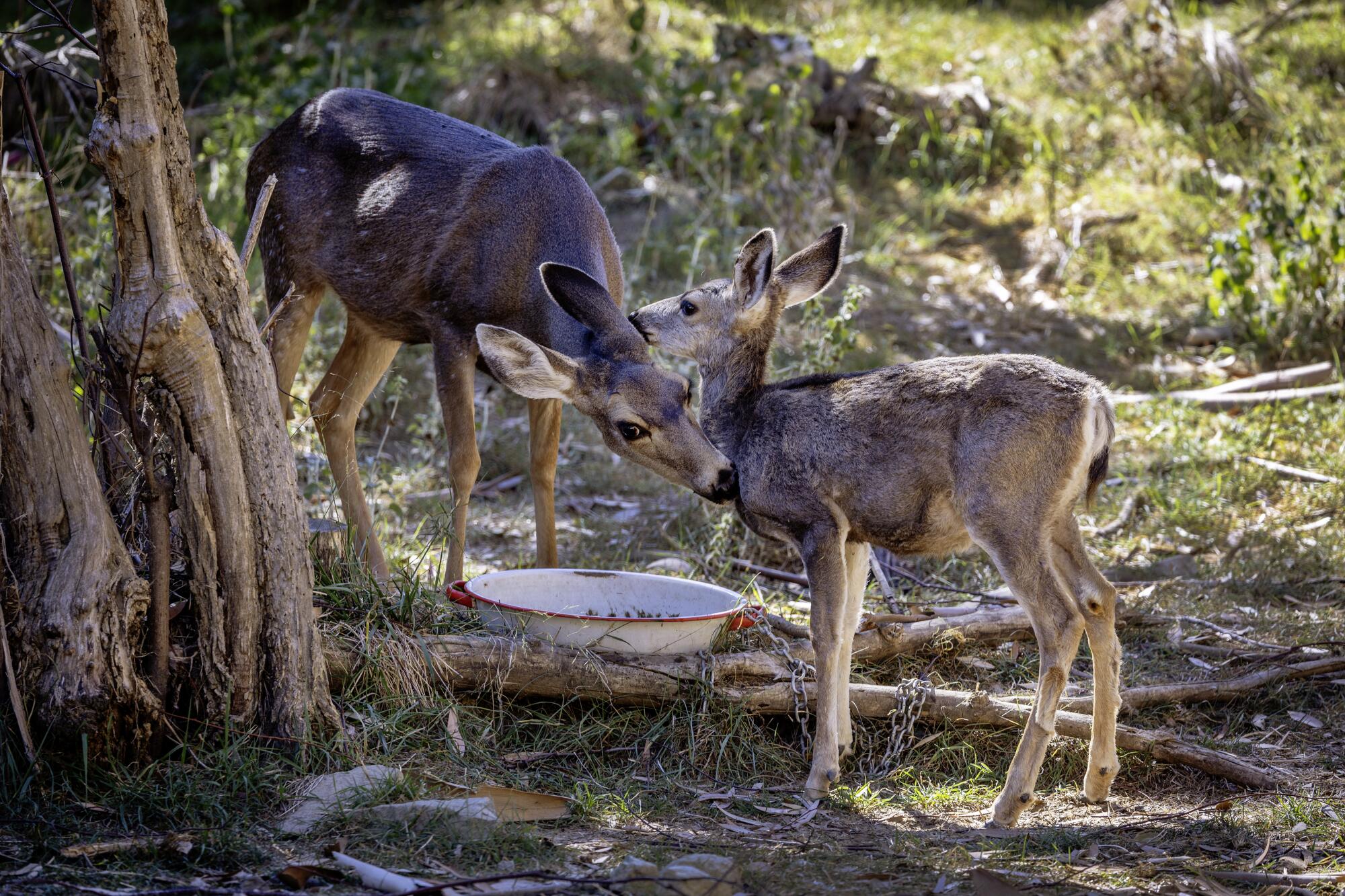
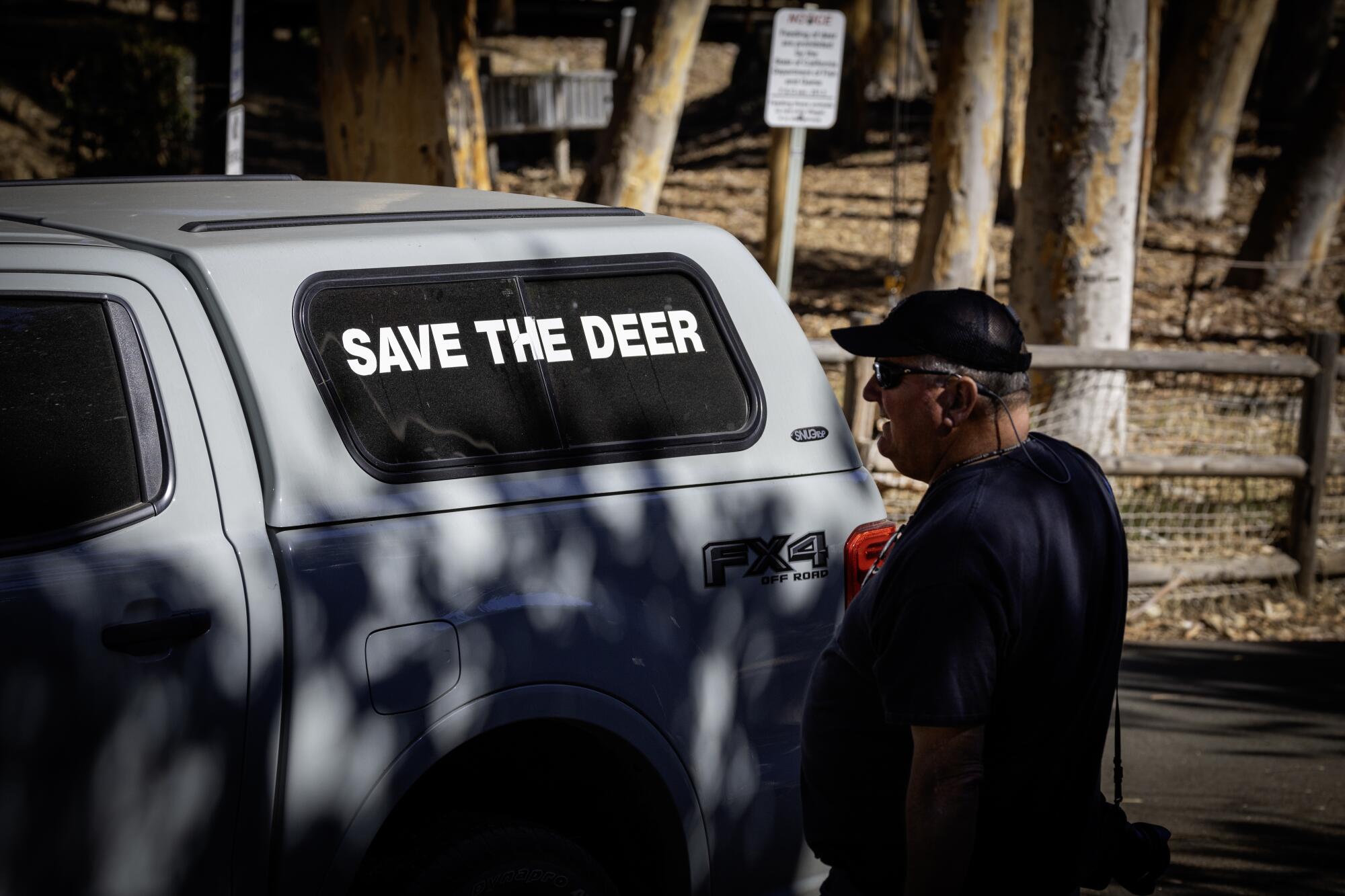
Richard Denney, veterinarian at the Animal Clinic of Catalina, agrees. “I took an oath to do my best to eliminate the pain and suffering of animals with my skill sets. So, I really wish they could cull the deer another way.”
Already, a “save the deer” petition has garnered more than 12,000 signatures from sympathizers across the nation.
Invasive deer are wreaking havoc on Catalina’s sensitive ecosystem, but relocation seems to be the more humane option than eradication.
“I’ve never heard anyone say that the highlight of their trip to Catalina Island was seeing a plant no one has ever heard of,” said Dianne Stone, a spokeswoman for the Catalina Island Humane Society.
“The mule deer have been on the island for nearly 100 years — their gentle presence is an integral part of our island’s appeal,” she said. “Where is the dignity in slaughtering these innocent animals which are so beloved by so many?”
Bre Bussard, 30, said it hasn’t been easy trying to explain the plan to her three children, ages 5, 7, and 10.
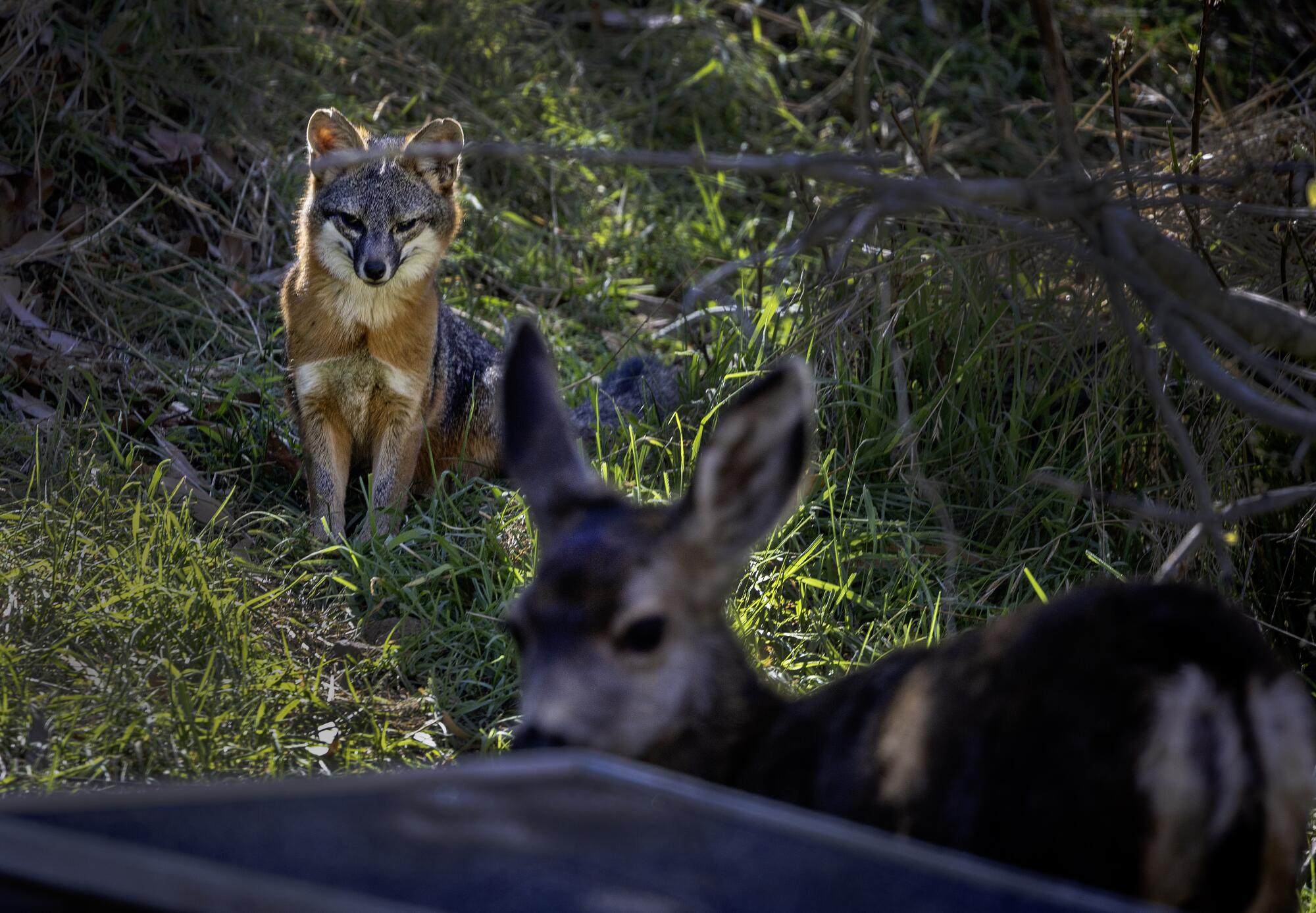
“Around Christmas, my kids came to believe the deer here were Santa’s helpers,” Bussard said, “and I’d say, ‘Tell them what you want for Christmas.’”
Now, Bussard said she’s telling her kids that she’s “going to fight like hell to stop this deer slaughter from happening. This is our home. These are our deer.”
At the core of the rancor is a sense that the conservancy failed to involve the entire community in the early stages of the planning process, sparking anger and resentment from residents who feel that, as one of them put it, “the historical, cultural, spiritual and economic value of the deer” has been all but ignored.
Many residents are calling on government officials to intervene.
In response to community pressure, the Avalon City Council on Thursday voted to amend its municipal code to prohibit hunting and trapping of wild animals within the city. An appeal to the California Department of Fish and Wildlife was less successful: The agency said it was “supportive of the habitat restoration project.”
Meanwhile, Los Angeles County Supervisor Janice Hahn, whose district includes the island, released a statement saying she was sorry to hear that this was the solution the conservancy landed on, but that the county has no jurisdiction in the matter.
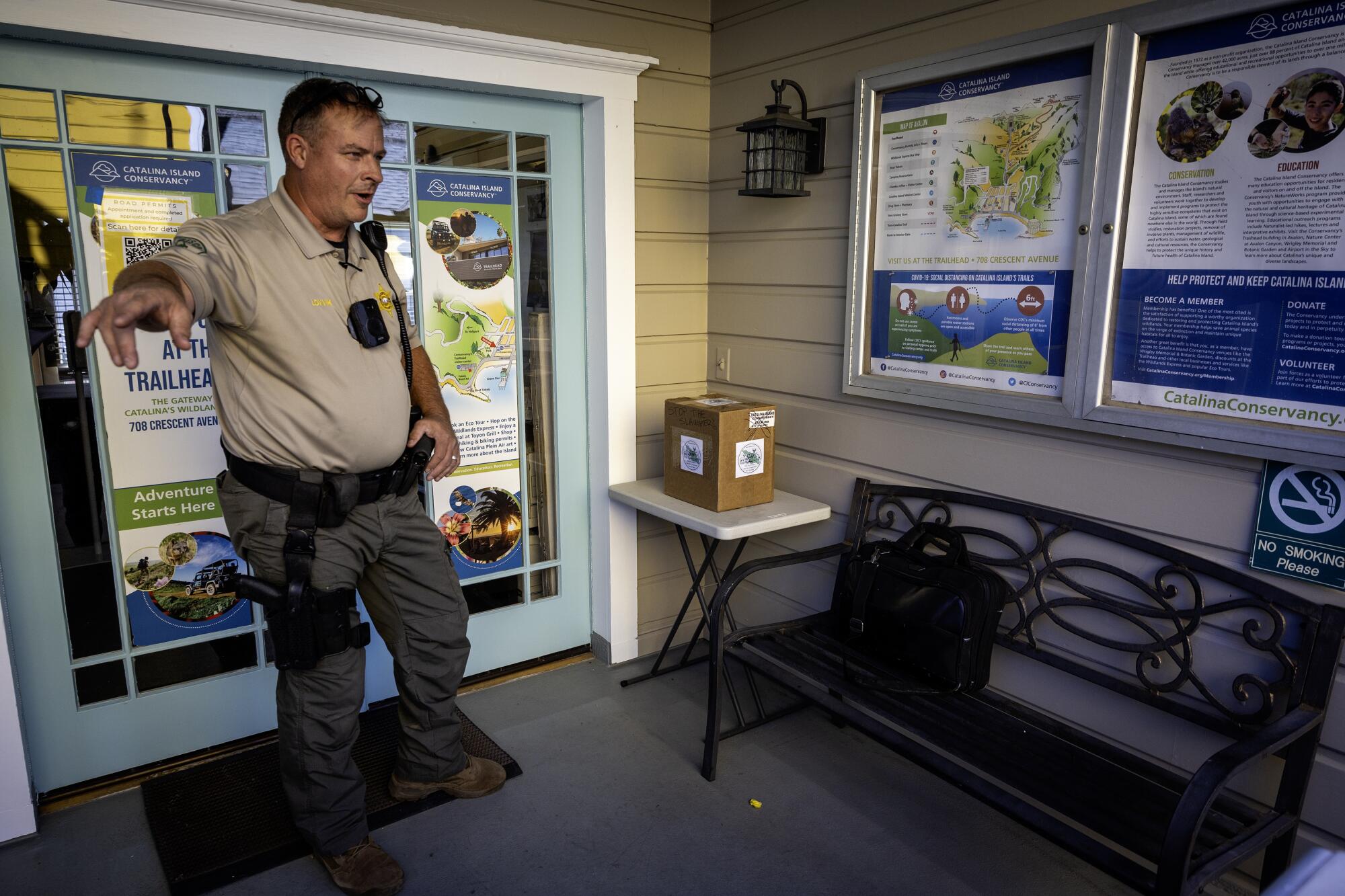
Frustrated perhaps by such responses, residents have taken matters into their own hands.
On Monday, Los Angeles County Sheriff’s deputies responded to reports that a suspicious package had been dropped off at the entrance to the conservancy’s office in Avalon: a cardboard box bearing the message, “Stop the slaughter. Stop the Conservancy.”
Investigators determined that someone had defaced the box after it had been mailed to the office.
Separately, the Catalina Islander, a weekly newspaper serving Avalon, has published paid political advertisements that attack Dennhardt personally. “Your pleasant demeanor is a deceptive and most cunning way of hiding your black heart,” read one ostensibly written by “Jane Doe.”
And, at the Catalina Express shuttle boat terminal, protesters greet visitors with signs that carry such messages as, “Our island. Our deer.”
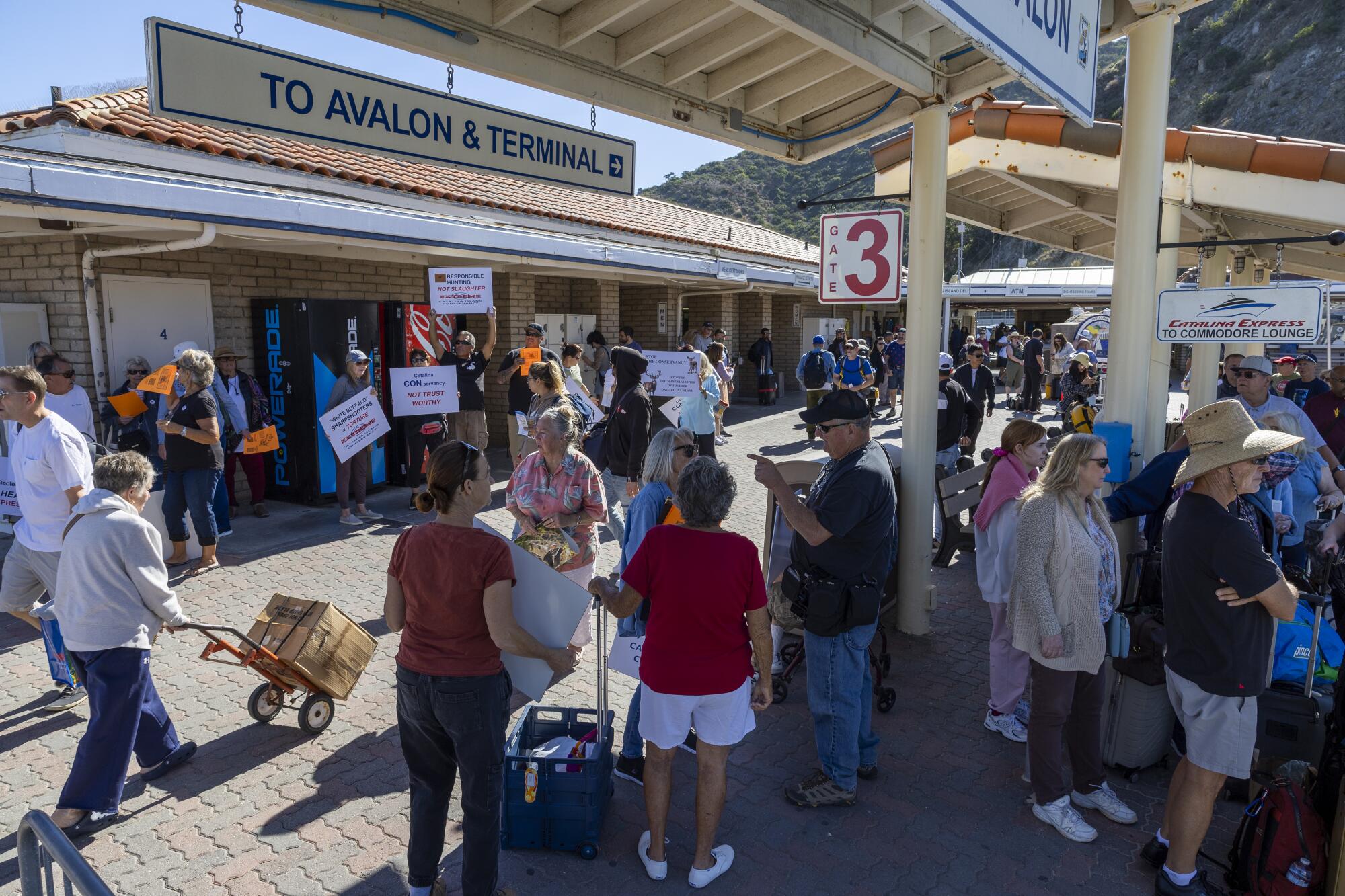
The turmoil has been difficult to watch for some.
“You can disagree with the conservancy plan all you want, but these personal attacks are completely out of order,” said Avalon City Manager David Maistros. “This rhetoric is doing far more damage than anything the conservancy is doing. It’s bad for the city.”
Some Avalon residents say the dispute has altered the debate over a much broader question: Who will chart the future for Catalina’s vast wilderness? Will it be the conservancy, acting for all island residents, or residents on behalf of the environment they share?
The Nature Conservancy hopes to ‘transform’ 24,329 acres of land it purchased at Point Conception in 2017.
During a recent Avalon City Council hearing, Leslie Baer Dinkel, who served on the conservancy executive team for a decade, put it this way: “In the America I know, we, the people of a community, have the right to determine our own fate — and that of a species that has been part of this community for more than 100 years.”
Catalina is visited by about 1 million tourists each year, yet most never set foot on the unpaved, 42,000-acre interior. Most of Catalina’s residents live in Avalon.
The Catalina Island Conservancy was formed in 1972 and is one of California’s oldest land trusts. Over the last four decades, it has shot, trapped and shipped out thousands of goats, pigs, and bison that it says were literally eating the island away.
The bison population has dropped from 350 to 90, and the remaining animals are on birth control.
Now, nonnative mule deer are in the cross-hairs.
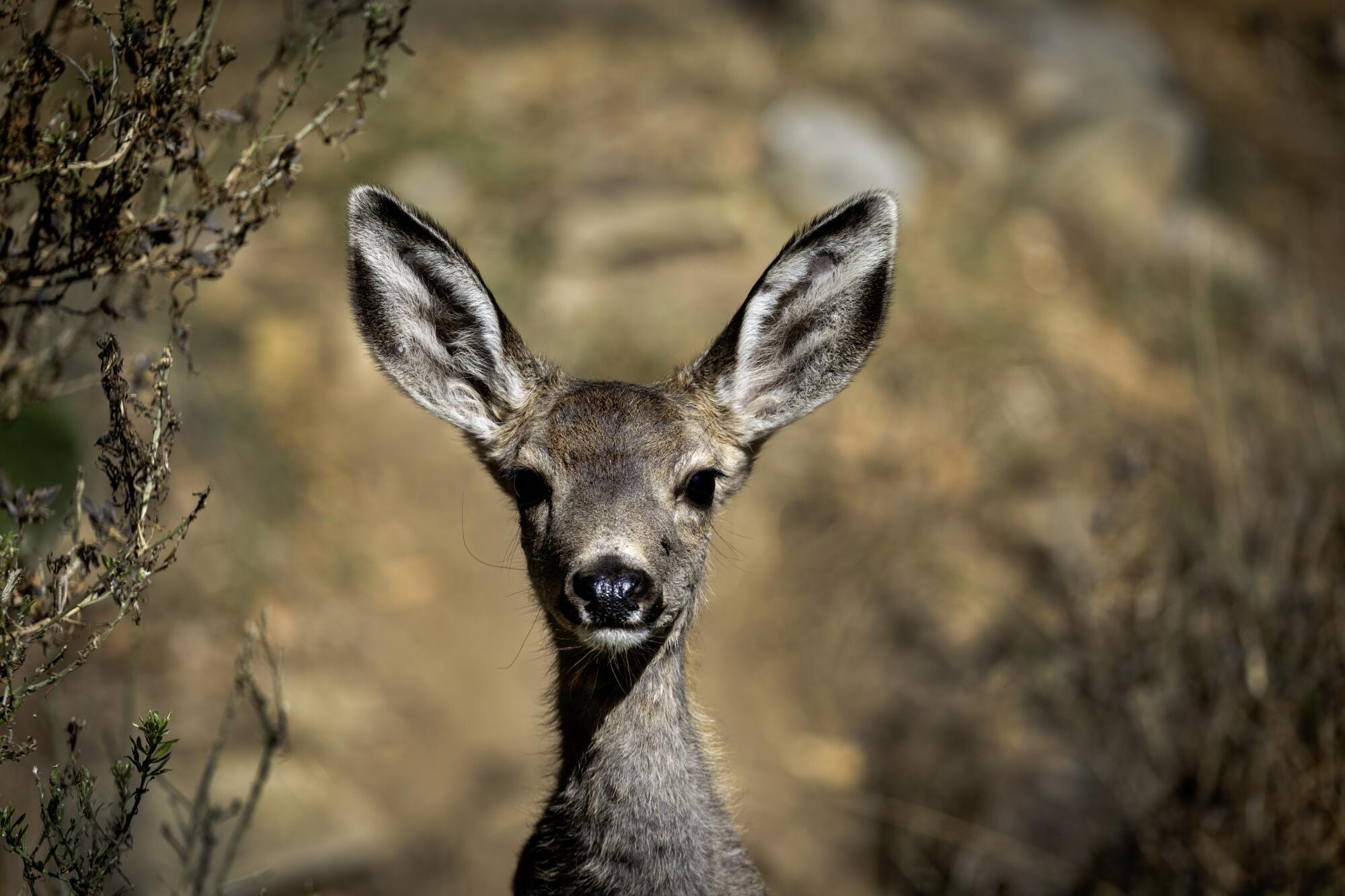
The first deer were shipped over by the Los Angeles Forestry Department in the 1930s, about the time pigs were brought from Santa Cruz Island to root out rattlesnakes. Domestic goats were turned loose by Spanish missionaries in the 1820s. Bison were imported for movies in 1924.
On an island that evolved for most of its history without herbivores larger than ground squirrels, conservancy scientists say, a unique array of shrubs and grasses became what biologists euphemistically refer to as “ice cream” to these nonnative animals.
The mule deer — whose population the conservancy estimates at roughly 2,000 — have not only left their voracious mark on the island’s backcountry but are increasingly venturing into the developed city of Avalon in search of sustenance. Biologists say this is because prolonged drought conditions and wildfires have destroyed their customary foraging grounds.
Reports of deer feasting on home gardens and fighting with pet dogs are becoming more common. In 2007, state wildlife authorities investigated the beheading of a buck, allegedly by an Avalon city employee who dressed the carcass and then left the head dangling in a soccer net near a preschool and City Hall.
The conservancy plans to hire sharpshooters from the nonprofit White Buffalo Inc., of Connecticut, to begin eradicating the deer next fall. Hunters will use AR-15-style rifles with nonlead bullets, so that animals that scavenge the carcasses will not be poisoned.
After two mountain lions who were transplanted to the Mojave Desert died of starvation, California wildlife officials have revised their relocation policy.
Hunted deer will be left where they fall because trying to airlift them from the rough, nearly inaccessible island interior would be dangerous and costly, officials said. However, conservancy and state officials intend to remove carcasses from the vicinity of Avalon and roadsides.
In the meantime, when conservancy biologists release research analyzing the impacts of introduced mule deer on the island, it is often met with skepticism or simply ignored in the community.
For example, roughly 200 residents attended an Avalon City Council hearing on Oct. 17 to express concerns, including the widespread belief that the deer population could be successfully managed if the conservancy would make hunting more affordable.
But only a few dozen of them stayed to hear Dennhardt explain that the conservancy loses money on the hunting program. “Like I said earlier, we’re a conservation organization,” she told the council members. “We’re not a hunting outfitter.”
Such assertions have ruffled the feathers of people like Shauna Norfleet Machado, a professional photographer and resident who said the conservancy made a big mistake by “choosing some stupid plants that one has never heard of or cares about over people who rely on deer to feed their families.”
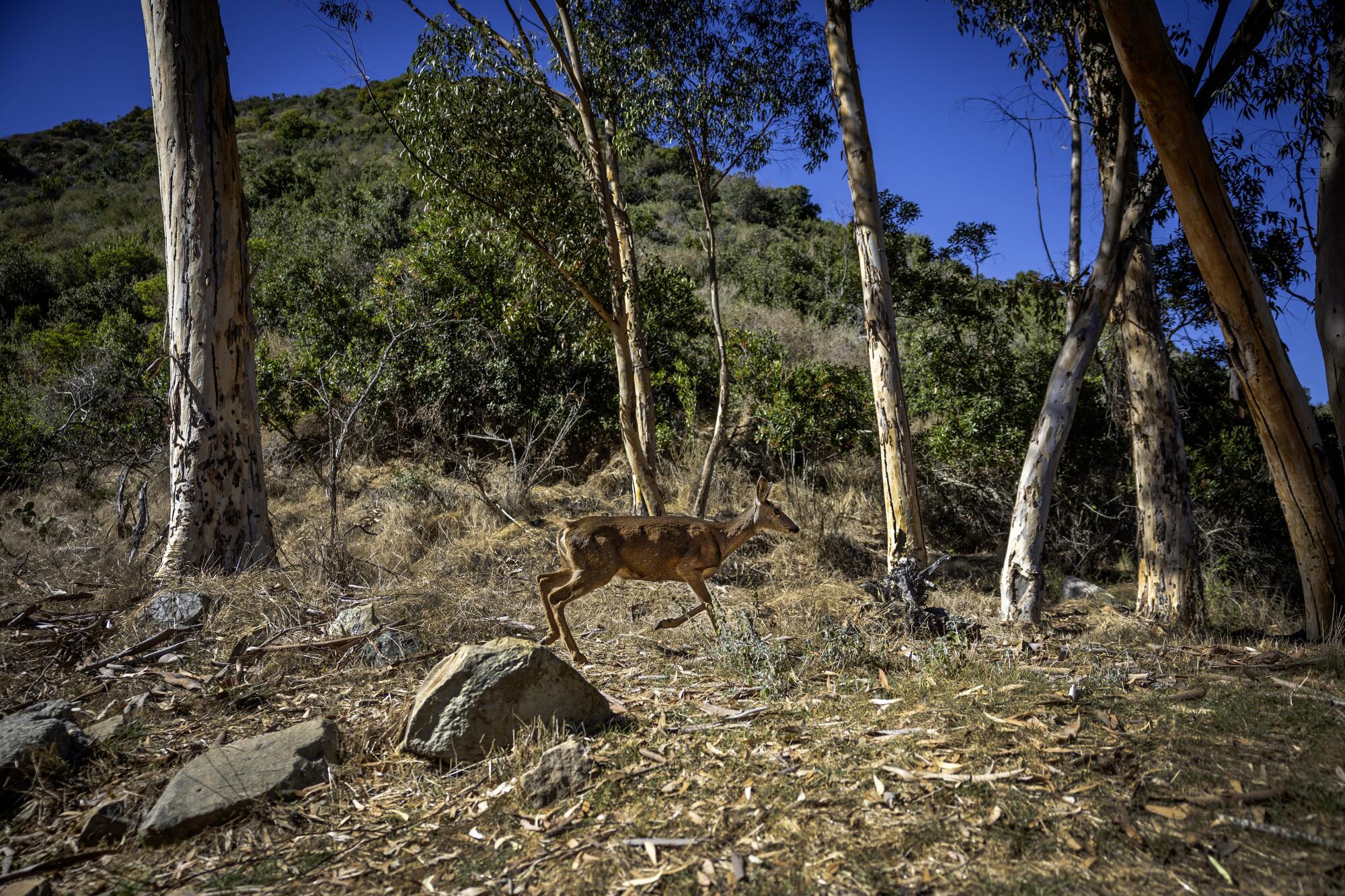
“I wouldn’t want to live here anymore if they got rid of the deer,” said Machado, whose family bags half a dozen deer on the island each year. “Night before last, we had venison burgers for dinner. Last night, it was venison stroganoff.
“We’d shoot Catalina deer all year long if we could,” she said.
The conservancy is supported by research scientists and organizations including the Center for Biological Diversity and the Nature Conservancy, who say Catalina’s native plants and animals are on the rebound because of its restoration efforts.
For instance, the U.S. Fish and Wildlife Service in 2016 downlisted the Santa Catalina Island fox from endangered to threatened. Populations of that subspecies found only on the island crashed to roughly 100 in 1999 because of a canine distemper epidemic. The island now is home to about 2,000 of the animals.
“If I may say so,” said William K. Hayes, a biologist at Loma Linda University School of Medicine, “the presence of deer on Catalina serves only the self-indulgent interests of humans at the expense of many other organisms.”
Toward a more sustainable California
Get Boiling Point, our newsletter exploring climate change, energy and the environment, and become part of the conversation — and the solution.
You may occasionally receive promotional content from the Los Angeles Times.

